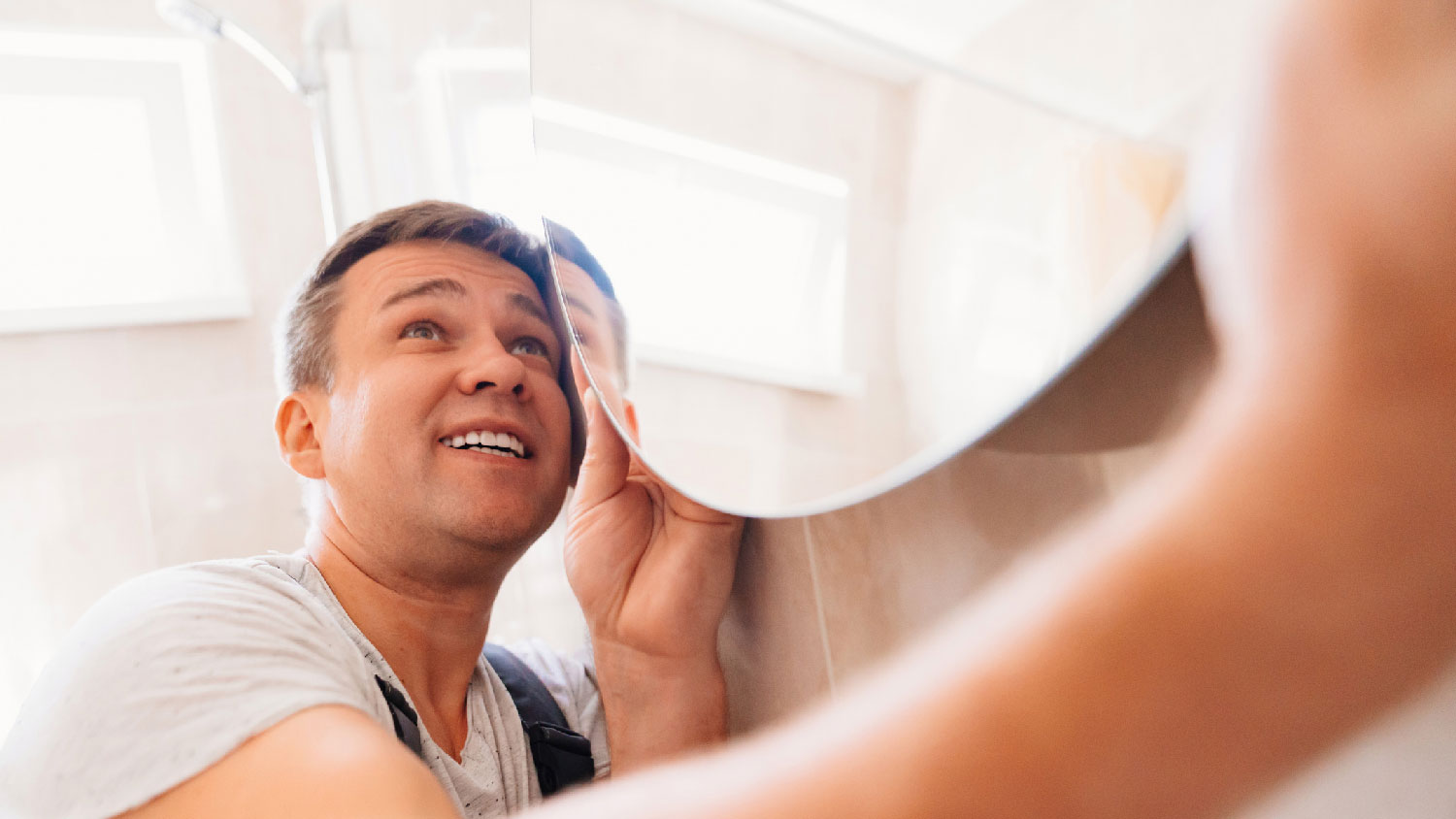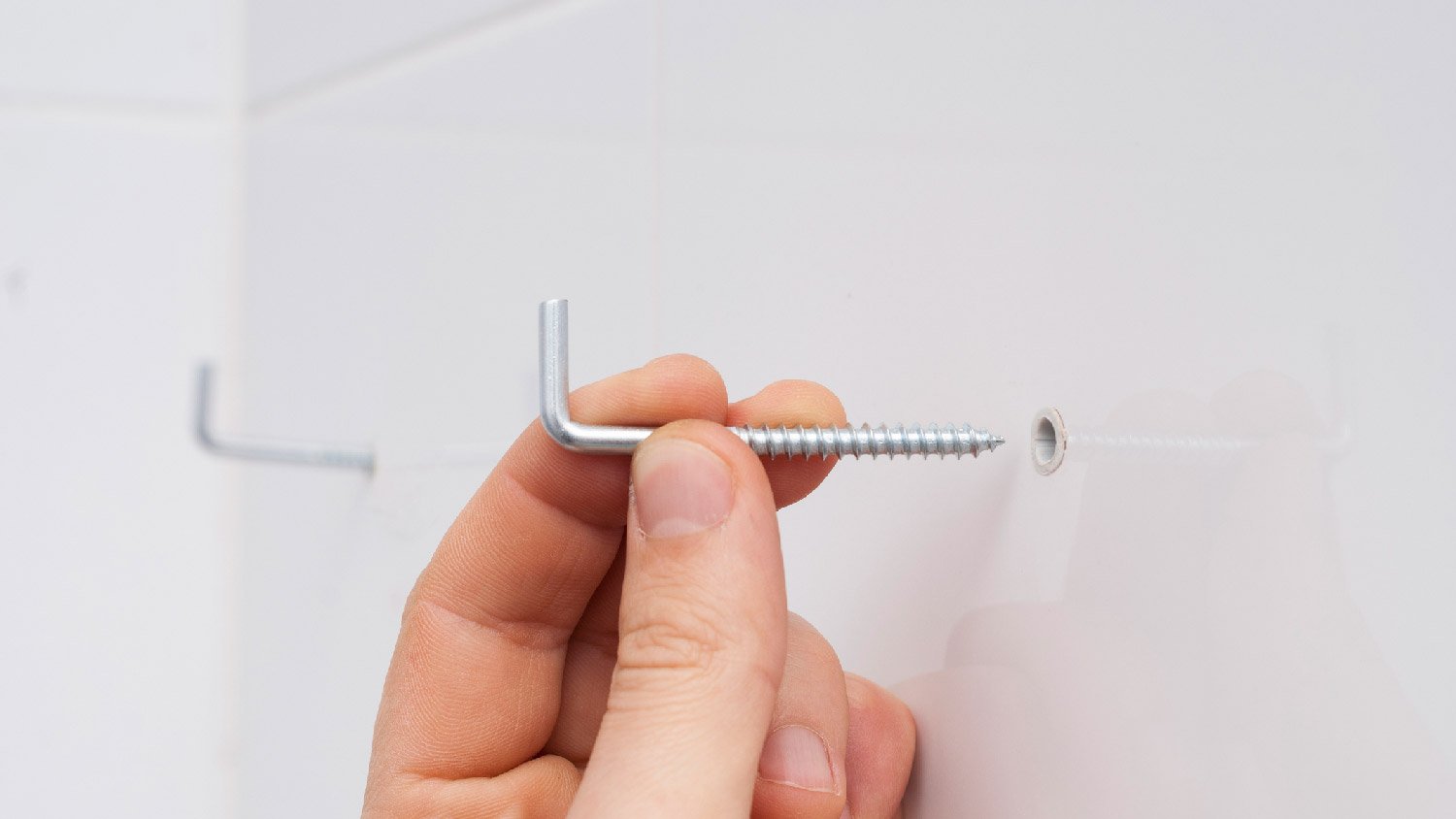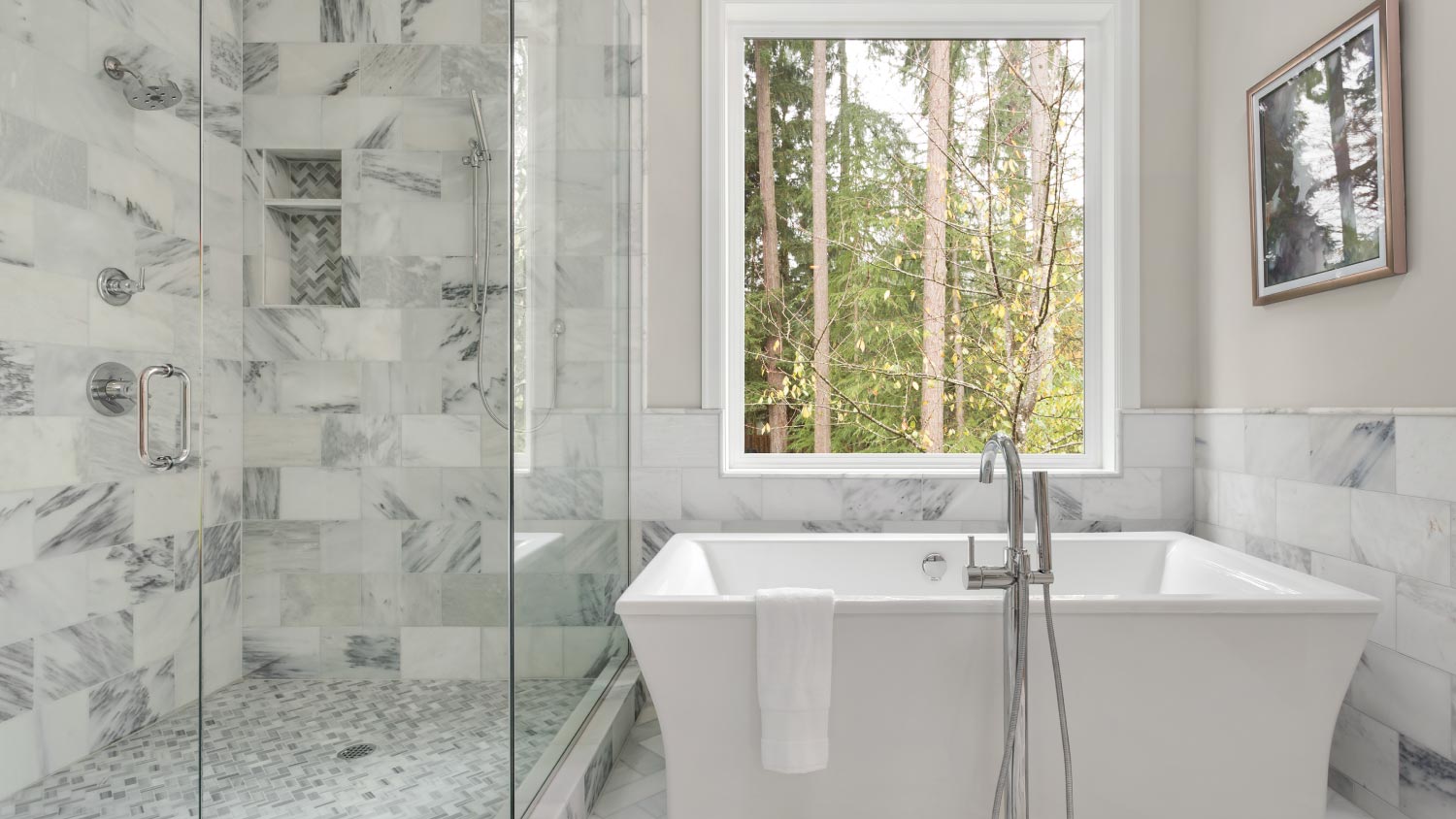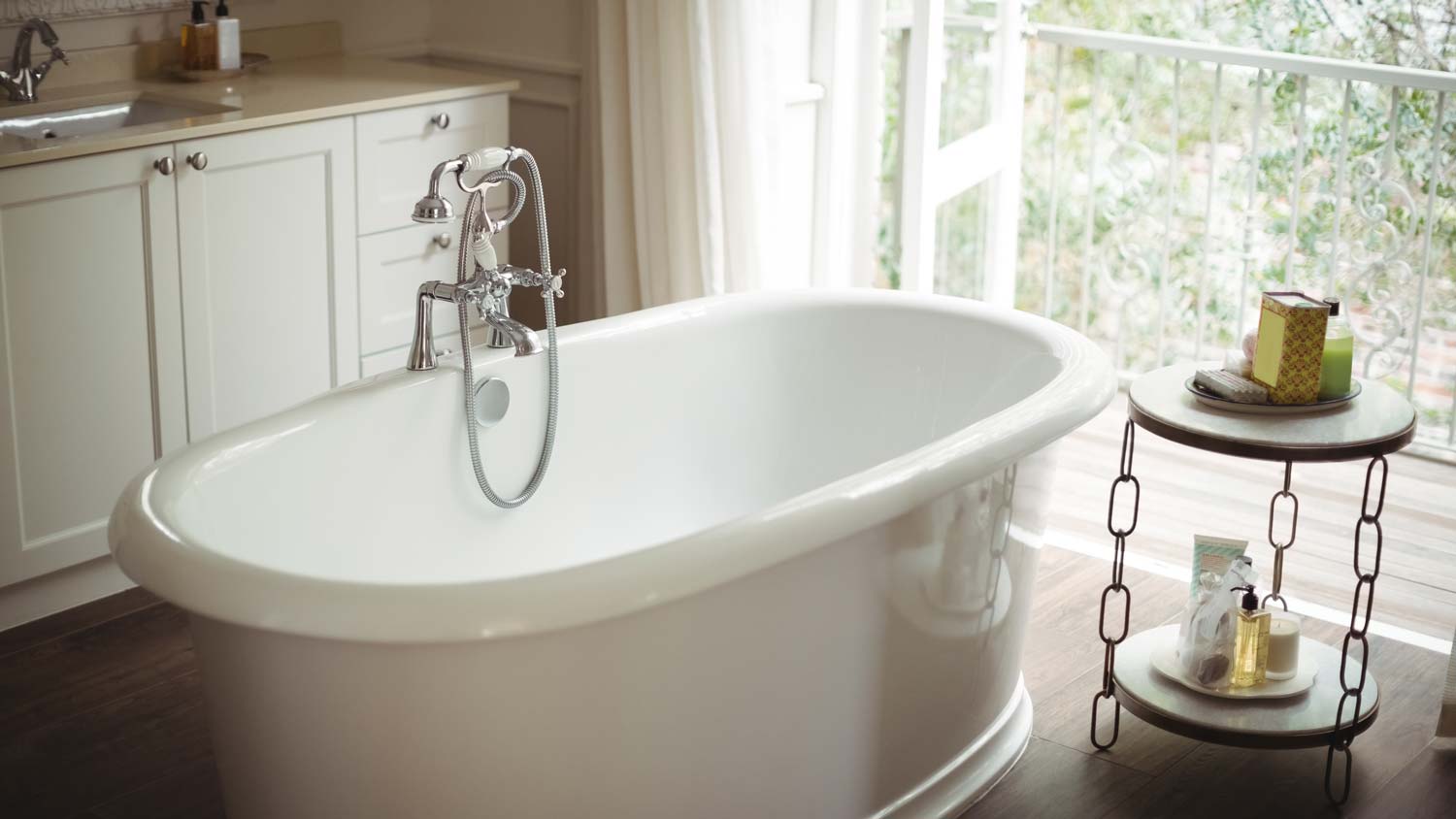
How much does a showerhead cost? Whether your current showerhead is broken or you want more pressure, you have many options to upgrade your showering experience. Learn the average price for various showerheads, features, and more.
Get clear reflections when you hang it yourself


Labor for installing a bathroom vanity costs anywhere from $200 to $1,000, but hiring a pro to install your vanity mirror is well worth the cost.
Large, heavy mirrors are best left to a skilled pro who can carefully lift and secure the mirror without breaking it or getting injured.
Since different types of mirrors and walls require different installation methods and hardware, rely on your mirror installation pro to assess and handle the technicalities for you.
A pro will also make sure your mirror is level and secure—no crooked reflections or drywall damage. They’ll select the right anchors, use proper tools, and minimize the risk of any mistakes.
Plus, a skilled installer can help ensure the vanity and mirror are the right size for your bathroom. Choosing an incorrect vanity size can make the room feel cramped and disrupt the overall layout.
A lopsided reflection is no way to start your morning. Proper hardware, tools, and preparation can help you hang your bathroom mirror straight and tall. Keep reading to find out how to hang a vanity mirror and get tips and tricks based on the mirror size, vanity size, and wall structure.
Safe mirror installation depends on the mirror’s weight and your wall type. To determine the mirror’s weight, stand on a scale holding the mirror. If you’re unsure if your wall is drywall or plaster, press a pushpin into it. If the pin sinks into the wall, it’s likely drywall. If it doesn’t, it’s probably plaster. Buy hanging hardware designed for the wall material. Hanging the mirror directly on a stud offers the strongest support. However, you can use wall anchors and mounting brackets or D-rings if the studs will put the mirror off-center.

After determining the wall material and weighing the mirror, it’s time to mount it. Different types of mirrors require slightly different mounting methods. If you’re unsure, a mirror installer can identify the correct mounting hardware and install your new mirror.
Framed mirrors have a center hanging bracket or two side brackets. If the mirror has two side brackets, connect hanging wire between the two brackets. You want enough wire to suspend the mirror, but keep the wire below the frame of the mirror. At each bracket, twist the wire around itself and use wire cutters to remove excess wire. You can proceed as follows:
Use a stud finder to locate a stud. If you can’t hang the mirror centered on the stud, measure and mark where you want to place the wall anchor.
Install the wall anchor according to the manufacturer’s directions.
Install a hook, D-ring, or mounting bracket.
Finally, hang the mirror, using a level to adjust the final placement.
Small frameless mirrors are lightweight but may require anchors if not attached directly to a stud. You can hang these mirrors with clips that attach to the wall with screws. Some mirrors may come with a few clips. However, you may need to buy extra clips to secure the mirror safely. Consider buying clips with wall anchors to save time and money.
Use a stud finder to locate the studs. Measure and mark where you want to hang the mirror.
Using a screwdriver, install the hanging clips.
Hang the mirror.
If the wall studs don’t allow for a centered installation, use a measuring tape and pencil to mark the center point for the mirror and placement points for the clips. Before installing the clips, add anchors at the clip placement points.
Large frameless mirrors are most often supported by the vanity top and held to the wall with mirror adhesive, but you can hang them with the right hardware. The process is like hanging a small frameless mirror, except it requires more (and heavier-duty) clips and mirror adhesive to support the added weight. You’ll also want a friend to help hold up the mirror during the installation so you can check the positioning.
Measure and mark where you want the mirror to go, and make center and edge marks to align the mirror.
Place the mirror according to the marks. Step back and check that the mirror is centered.
Remove the mirror and wipe the back with rubbing alcohol to create a clean surface for the mirror adhesive.
Apply mirror adhesive to the back of the mirror according to the manufacturer’s instructions. They may also include tips for mirror placement and support. Only use an adhesive recommended for mirrors, as other types may not adhere correctly.
Place the mirror in its final position and press it into place.
These large mirrors can make a small bathroom feel bigger by reflecting natural light and other details (like tile, fixtures, and the shower).

Before you do anything, weigh the mirror and make sure you know the wall material you’re working with. Read the ratings and recommendations on hanging hardware for the weight limit and the wall materials it works with.
Here are a few more tips to consider for hanging your vanity mirror:
Mounting hooks are useful when hanging a mirror that weighs 15 to 30 pounds. Check that the hooks are rated for the weight of the mirror.
Attaching a mirror to a wall stud is the most secure mounting option. But if using a stud isn’t an option, wall anchors can create a sturdy foundation for the mirror.
Use a level to straighten the mirror after installation. If using adhesives, check that the mirror is level before pressing the mirror to the wall.
Mirror adhesives are best for mirrors that weigh 5 to 10 pounds. However, they can be used on larger mirrors if the majority of the mirror’s weight is supported by the vanity.
Be aware that mirror adhesive can tear away drywall if you need to remove the mirror later on.
Hanging a bathroom mirror is a simple project that most beginner DIYers can handle. You need a few basic tools, like a level, hammer, screwdriver, stud finder, and possibly a power screwdriver if you need to install anchors.
If you would like to simplify things even more and have a pro take over the job, hire a local mirror installer. A pro can do the job efficiently, and your hanging mirror will be a focal point in your bathroom. Bathroom vanity installation costs between $300 and $2,200, which may or may not include the mirror.
From average costs to expert advice, get all the answers you need to get your job done.

How much does a showerhead cost? Whether your current showerhead is broken or you want more pressure, you have many options to upgrade your showering experience. Learn the average price for various showerheads, features, and more.

Shower installation costs in Houston, TX depend on size, style, and materials. No matter the budget, this guide can help you plan your project and even save a few bucks.

Remodeling your bathroom can add significant value to your home. Your bathroom remodel cost in Houston, TX will depend on size, fixtures, materials, labor, and other factors.

An updated bathtub can give a bathroom a whole new look. Find out how much it costs to replace a bathtub in Atlanta, GA, including prices by type and labor costs.

An updated bathtub can give a bathroom a whole new look. Find out how much it costs to replace a bathtub in Dallas, TX, including prices by type and labor costs.

DIY sink installation is a doozy but do-able for those with experience. Use this guide to learn how to install a bathroom sink in a few steps.